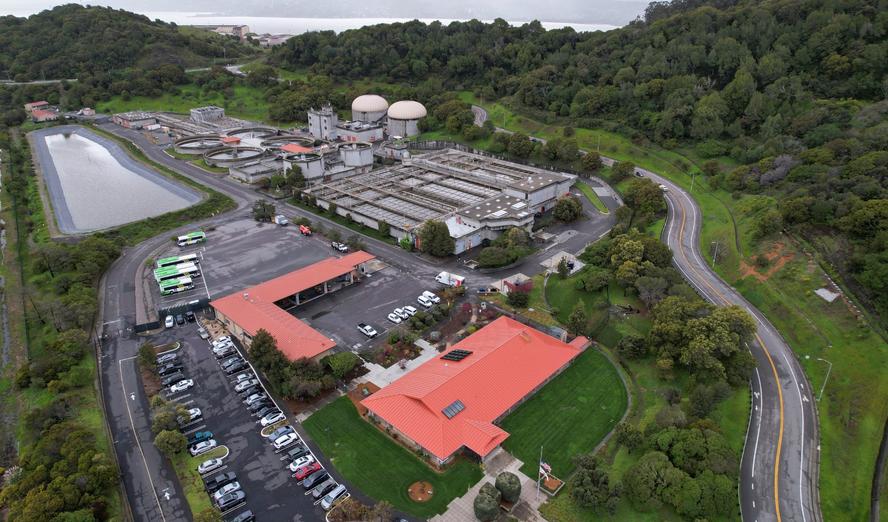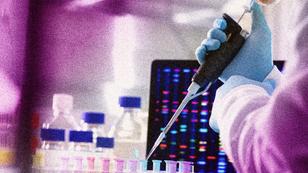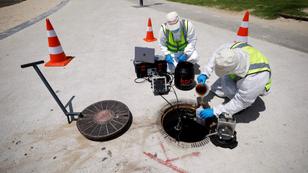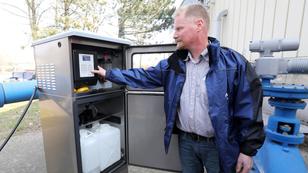This commentary was first published as Pedro Nascimento de Lima, Adeline Williams, Henry H. Willis, Laura J. Faherty, “The Case For Sustaining Wastewater Surveillance Capabilities In The US,” Health Affairs Forefront, April 21, 2025, Copyright © 2025 Health Affairs by Project HOPE—The People-to-People Health Foundation, Inc.
The National Wastewater Surveillance System (NWSS) was launched by the Centers for Disease Control and Prevention in September 2020 to connect independent, local wastewater efforts to form a robust, sustainable national system. But the funding supporting the NWSS will run out on September 30, 2025, raising the question of whether and how capabilities delivered by the NWSS will be sustained.
Between 2021 and 2024, the federal government invested more than $500 million (PDF) in the NWSS, most of which was allocated to more than 50 state and local health departments to develop wastewater surveillance programs tailored to local needs while providing a comprehensive, national overview of disease transmission. The NWSS provided early warnings of community-level infection trends using data from more than a thousand sampling sites, leading to real-time public health action such as prioritizing resources, updating clinical guidance, issuing health alerts, and performing staff planning in clinical settings.
In the past four years, the NWSS expanded its scope to monitor seasonal influenza, respiratory syncytial virus, mpox, and H5 influenza. Public health decisionmakers and the public can access wastewater data and visualize community trends through dashboards that aggregate data collected across hundreds of sites. The NWSS has demonstrated its value as an essential public health tool through successful multipathogen surveillance and has shown that wastewater surveillance is a useful complement to clinical surveillance.
Wastewater surveillance offers several advantages over traditional surveillance methods: It tracks disease trends without relying on testing of individuals, provides an opportunity to detect asymptomatic disease before people seek treatment, and measures disease prevalence using a single sample. This capability is crucial to allow the United States to retain situational awareness of potential threats to our health—without requiring millions of people to get tested for a disease that may or may not pose major risk to the population.
The Case for Retaining Wastewater Surveillance in the United States
Maintaining and enhancing wastewater surveillance capabilities in the United States is crucial for a robust public health infrastructure and health security. History has shown that continued investment in public health initiatives such as the NWSS has substantial benefits. The National Malaria Eradication Program (PDF) eliminated malaria in the southern United States less than five years after it was launched in 1947. The National Foundation for Infantile Paralysis (now known as the March of Dimes) rid the United States of polio after a sustained and coordinated effort from the government and the public. These are just two of the countless examples of public health successes.
Maintaining and enhancing wastewater surveillance capabilities in the United States is crucial for a robust public health infrastructure and health security.
Our recent research estimates that a system such as the NWSS could generate net benefits of nearly $1,500 per person in the first year of a new pandemic similar to COVID-19. Given current U.S. health challenges, including the growing H5N1 threat, robust surveillance systems such as the NWSS are increasingly essential. If wastewater surveillance proves instrumental in detecting and responding to the next pandemic, the NWSS could join the seminal public health achievements mentioned above while also protecting national security.
Sustaining and expanding wastewater surveillance through the NWSS would:
- preserve a unique capability to detect the spread of infectious diseases
- maintain hard-earned partnerships with wastewater utilities that required significant time to establish and maintain
- enable the NWSS to serve rural communities and not only in large metropolitan areas where large sampling sites are available
- promote technological advances in testing and data analysis that have been enabled and supported through the NWSS
- save time and money that would be required to rebuild the system from scratch during a future pandemic.
To maximize wastewater surveillance's potential, avoid fragmentation, and prevent geographic inequities in surveillance coverage that further neglect rural communities, the federal government can take the lead, while continuing its partnerships with the private sector. Building on what's being learned through critical research initiatives such as WastewaterSCAN, retaining the NWSS' capabilities within the U.S. government ensures that these technologies contribute to a cohesive national strategy.
Improving Our “Return on Investment” on Wastewater Surveillance
Maintaining this capability is a first step, but it is not enough. Several improvements could enhance the “return on investment” on wastewater surveillance.
Improving Sampling Site Selection
First, strategically selecting sampling sites could enhance data representativeness, ensuring that both urban and rural areas are monitored. This is particularly important for diseases such as H5N1, which can emerge in less-populated regions or where the prevalence of disease shedding is low. Sample collection now depends on utility partners at wastewater plants and heavily relies on facilities that serve large populations. Effectively including smaller districts, or even the 20 percent of Americans unconnected to the public sewage system, could increase the number of people served by the NWSS.
Testing for Additional Pathogens
Second, expanding the number of pathogens that the NWSS monitors would increase the program's value for public health decisionmaking. A single sample can provide enough material to test for many pathogens simultaneously, such as antibiotic-resistant pathogens, common respiratory viruses, and emerging diseases such as Candida auris. Public health officials will need to continuously prioritize and decide which pathogens to test for depending on funding, capacity, assay availability, and public health need—and the NWSS is the entity that could provide this guidance.
Adopting a “Pathogen Agnostic” Approach
Third, more funding for the NWSS could allow a “pathogen agnostic” approach. This method uses advanced genomic techniques to survey for any pathogens present without looking for any specific one. Although a pathogen agnostic approach has not yet been integrated into the NWSS, such an approach would provide a valuable tool to detect novel or emerging pathogens, further harnessing the information provided by wastewater surveillance and enhancing biosecurity.
Standardizing Sampling Methods
Finally, standardizing sampling methods could improve data quality and comparability across different locations or different pathogens. The NWSS relies on public and private partners across the country. Although standardized operating procedures (PDF) have been developed, how sites collect and process samples varies, especially depending on capacity. Standardizing the methods for sample processing would be more efficient and would provide a more accurate picture of disease trends at the national level.
Sustaining wastewater surveillance capabilities would enable comprehensive national coverage for routine and emerging pathogens.
Sustaining wastewater surveillance capabilities would enable comprehensive national coverage for routine and emerging pathogens; system improvements would enhance detection and response capabilities; and long-term investment would strengthen preparedness for future health threats, both domestically and globally.
It's clear that wastewater surveillance has become an essential tool to preserve the United States' health and security. We cannot afford to go back to the pre–COVID-19 days in which a disease emerges and we're flying blind.
Authors' Note
The authors would like to acknowledge Anna Mehrotra, Ph.D, for her insightful comments.




